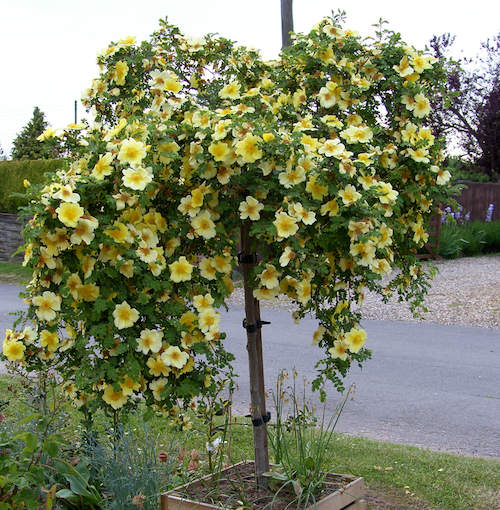
Now’s the time to plant standard roses …
SEO SpaceI’ve just returned from a week’s botanical painting in rural Transylvania where heavy, thundery showers alternated with days of warm sunshine.
The landscape there has been traditionally farmed for generations and the flora is still abundant and enormously varied on the hills – we found six different wild campanulas and three species that are now on the endangered list here in a single meadow.
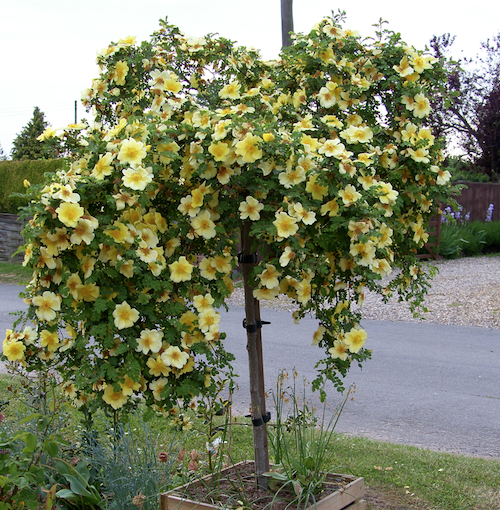
Rosa ‘Canary Bird’ makes a beautiful weeping standard
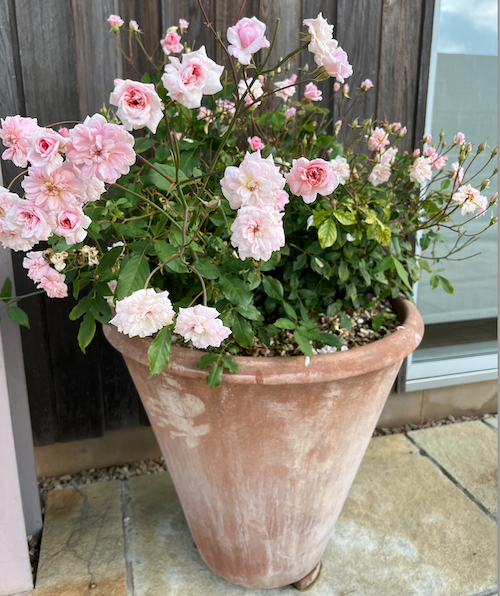
Rosa ‘Cecile Brunner’ has put out another flush of flowers since the rain
Back in Gloucestershire the benefits of the recent rain are already clear.
The lawn is slowly greening up, although I doubt if it will return to its previous velvet splendour this year; the herbaceous plants that had virtually stopped growing look refreshed; my favourite little bush rose, Cecile Brunner, has put out a flush of new flowers and looks lovely in her pot on the terrace. One of the positives of the long, hot spell is that the native hedges, which had put on strong growth throughout spring and early summer, have only needed to be cut once this year. Normally we cut back the late summer growth again in September but there will be little late growth this year.
I am now making plans for the autumn: what to move and what to divide; where I need to take things out; where I might improve my planting and also what new plants I plan to put in.
Two years ago I put in a standard rose and that’s one thing I am going to change. I rushed out as soon as lockdown ended and bought the first standard I could find to use as a specimen plant. I realised in the first year that I had made a mistake by not researching properly the characteristics of standards – mine is a thug that shoots straight upwards and needs restraining rather than training!! Since then I have looked carefully at which roses make the best standards. These, I think, are five of the best, easily available from either Peter Beales or from David Austin.
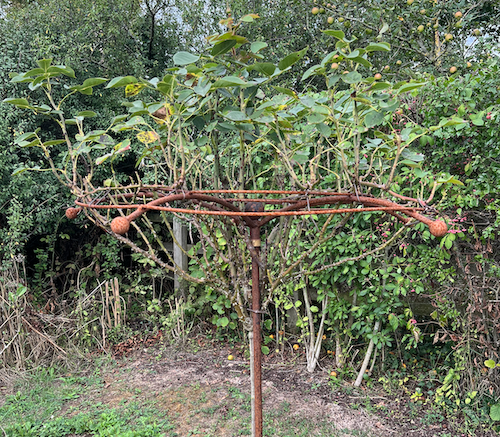
My thuggish standard rose is certainly not what I wanted to achieve!
The characteristics of standard roses
Standard roses are trained from two types of rose grafted onto a rootstock: shrub and weeping. Shrub roses will gradually be trained into a large mop head that needs the support of an umbrella to stop the heavily laden branches from breaking; weeping roses can be trained to grow upwards and then arch over and be tied to the umbrella to give a lovely weeping effect. I prefer weeping standards, perhaps less formal than the shrub varieties, but the varieties I suggest offer choices for every style of garden.
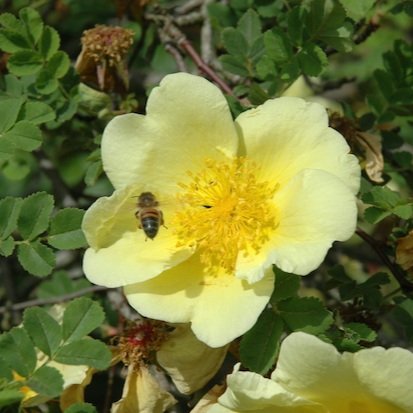
‘Canary Bird’: Photo credit Peter Beales Roses Ltd
‘Canary Bird’: although ‘Canary Bird’ is advertised as a standard shrub rose, its arching habit makes it ideal for a weeping standard. As its name suggests, it is a bright, lemon yellow, single rose with pronounced anthers and is very attractive to pollinators – a glory of late spring!

‘Awakening’: Photo credit Peter Beales Roses Ltd
‘Awakening’: another weeping shrub rose bred from the popular ‘New Dawn’ climber. It is a repeat flowering rose which will give continuity of flower. It is described as having a ‘slender habit’ which I think makes it an ideal standard; the growth is soft enough to be tied into the support so that it can be trained into shape.
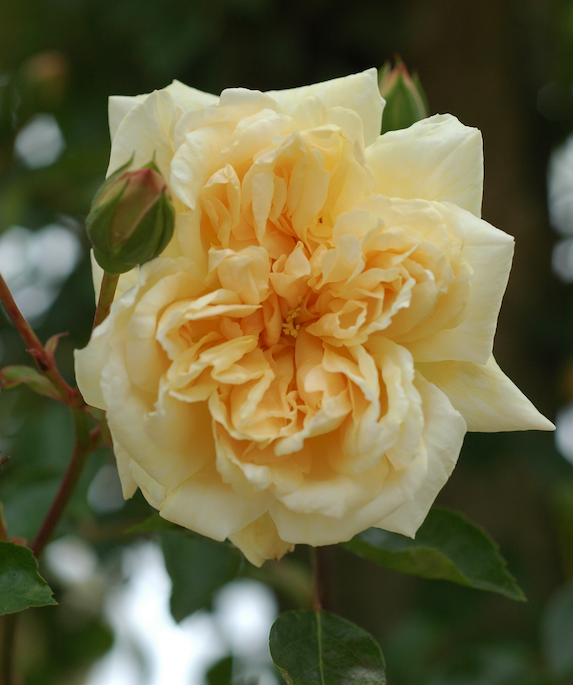
‘Gardenia’: Photo credit Peter Beales Roses Ltd
‘Gardenia’: an old-fashioned double, quartered rose which opens pale yellow and develops pink tones as it fades – beautifully scented. It won’t arch like ‘Canary Bird’ but will droop delightfully.

‘Clare Austin: Photo credit David Austin Roses Ltd
‘Clare Austin’: is a shrub standard suitable for training into a large head atop its stem. It opens from pale lemon buds to a creamy white and is a scented rose that will keep flowering all season; it is also resistant to blackspot – always a plus in a rose.
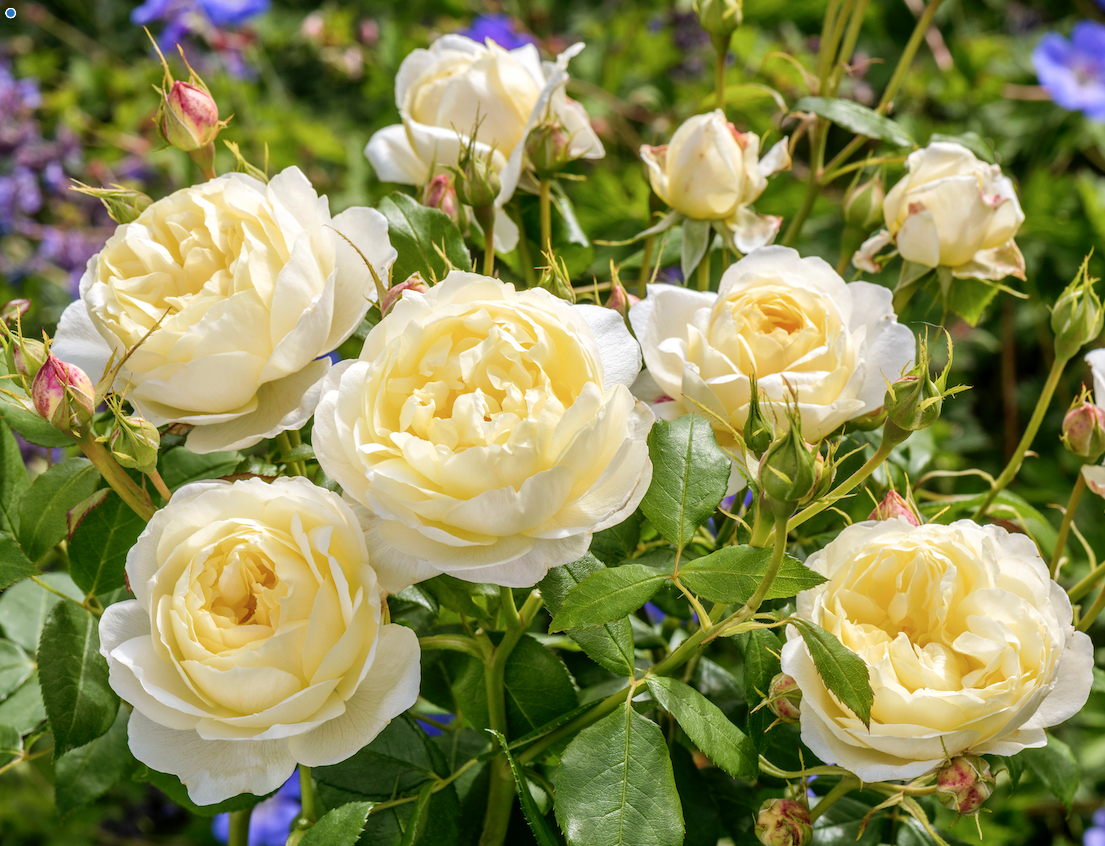
‘Vanessa Bell’: Photo credit David Austin Roses Ltd
‘Vanessa Bell’: is a shrub rose for training into a head. This is another of the softly coloured roses that I love, they glow at dusk as they fill the air with their scent. ‘Vanessa Bell’ opens pale yellow paling to white at the edges and forms large clusters of flowers. It is described as having a ‘bushy, upright head’ but its habit is not thuggish and it will train well as a mop head
How to plant a standard rose
Planting a standard rose is very similar to planting any rose. Prepare the ground well, digging a generous hole for the rose and adding a soil improver or well-rotted manure. Both pot grown and bare-root roses should be well watered and handled carefully to prevent damage to the roots; bare root and potted roses will both benefit from a sprinkling of mycorrhizal fungi to stimulate root growth. Position the root carefully in the centre of the hole (the stem should be 2” below the top of the hole). Ensure that the roots of bare-rooted plants are well spread and that the plant is upright. Before filling in the hole, position the rose umbrella.
Putting in a standard rose umbrella
Position the umbrella as close to the stem of the rose as possible. Using a mallet, tamp the ball of the umbrella until it is as close as possible to the break at the top of the stem (where the growing buds have been grafted); the height of our rose umbrellas means that approximately 20cm of the stake will go into the ground; tie the pole to the stem of the rose at the top and bottom – they will give each other support as the rose becomes established. New growth comes up through the spokes of the umbrella and can be tied in either horizontally for a shrub rose or allowed to grow upwards and then arch down to be tied to the outer spokes of the ring to form a weeping standard.
Later this month I shall be looking at the containers I have photographed in the gardens that I have visited over the summer, looking at the plant combinations that work and also having a good, hard look at my own large containers.

